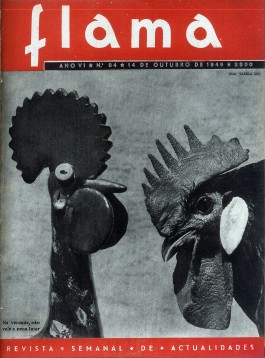4.What Fascism?
ABSTRACT / RESUMO
Portuguese architecture gained considerable attention in recent times. However, Portugal is a country in the periphery of Europe that was for 48 years (1926-1974) under the rule of a Dictatorship. Understanding this phenomenon implies dealing with the times of this regime, when Portugal was living "proudly alone" in Salazar's words, but also globally, with an Empire to build and develop. Alongside with a homonymous symposium (2020), "What Fascism" aims to research the ongoing presence and the legacy of the Estado Novo regime, namely in the field of heritage practices and theories.
coordination / COORDENAÇÃO
Luís Miguel Correia
Guest RESEARCHERS / INVESTIGADORES CONVIDADOS
Nuno Rosmaninho,
Ricardo Agarez,
Susana Lobo
A arquitectura portuguesa conheceu nos tempos mais recentes uma redobrada atenção. Contudo, Portugal é um país na periferia da Europa que esteve durante 48 anos (1926-1974) sob um regime de Ditadura. Perceber este fenómeno, decerto pressupõe lidar com a época da Ditadura, em que Portugal vivia “orgulhosamente só” nas palavras de Salazar, mas também globalmente, com um Império para cuidar e construir. Em conjunto com o simpósio homónimo (2020), “What Fascism” procura investigar a contínua presença e o legado do regime do Estado Novo, nomeadamente no domínio prático e teórico do Património.

Capa da edição de 14 de Outubro de 1949 da revista Flama
4.What Fascism?
coordination / COORDENAÇÃO
Luís Miguel Correia
Guest RESEARCHERS / INVESTIGADORES CONVIDADOS
Nuno Rosmaninho,
Ricardo Agarez,
Susana Lobo
ABSTRACT / RESUMO
Portuguese architecture gained considerable attention in recent times. However, Portugal is a country in the periphery of Europe that was for 48 years (1926-1974) under the rule of a Dictatorship. Understanding this phenomenon implies dealing with the times of this regime, when Portugal was living "proudly alone" in Salazar's words, but also globally, with an Empire to build and develop. Alongside with a homonymous symposium (2020), "What Fascism" aims to research the ongoing presence and the legacy of the Estado Novo regime, namely in the field of heritage practices and theories.
A arquitectura portuguesa conheceu nos tempos mais recentes uma redobrada atenção. Contudo, Portugal é um país na periferia da Europa que esteve durante 48 anos (1926-1974) sob um regime de Ditadura. Perceber este fenómeno, decerto pressupõe lidar com a época da Ditadura, em que Portugal vivia “orgulhosamente só” nas palavras de Salazar, mas também globalmente, com um Império para cuidar e construir. Em conjunto com o simpósio homónimo (2020), “What Fascism” procura investigar a contínua presença e o legado do regime do Estado Novo, nomeadamente no domínio prático e teórico do Património.

Capa da edição de 14 de Outubro de 1949 da revista Flama